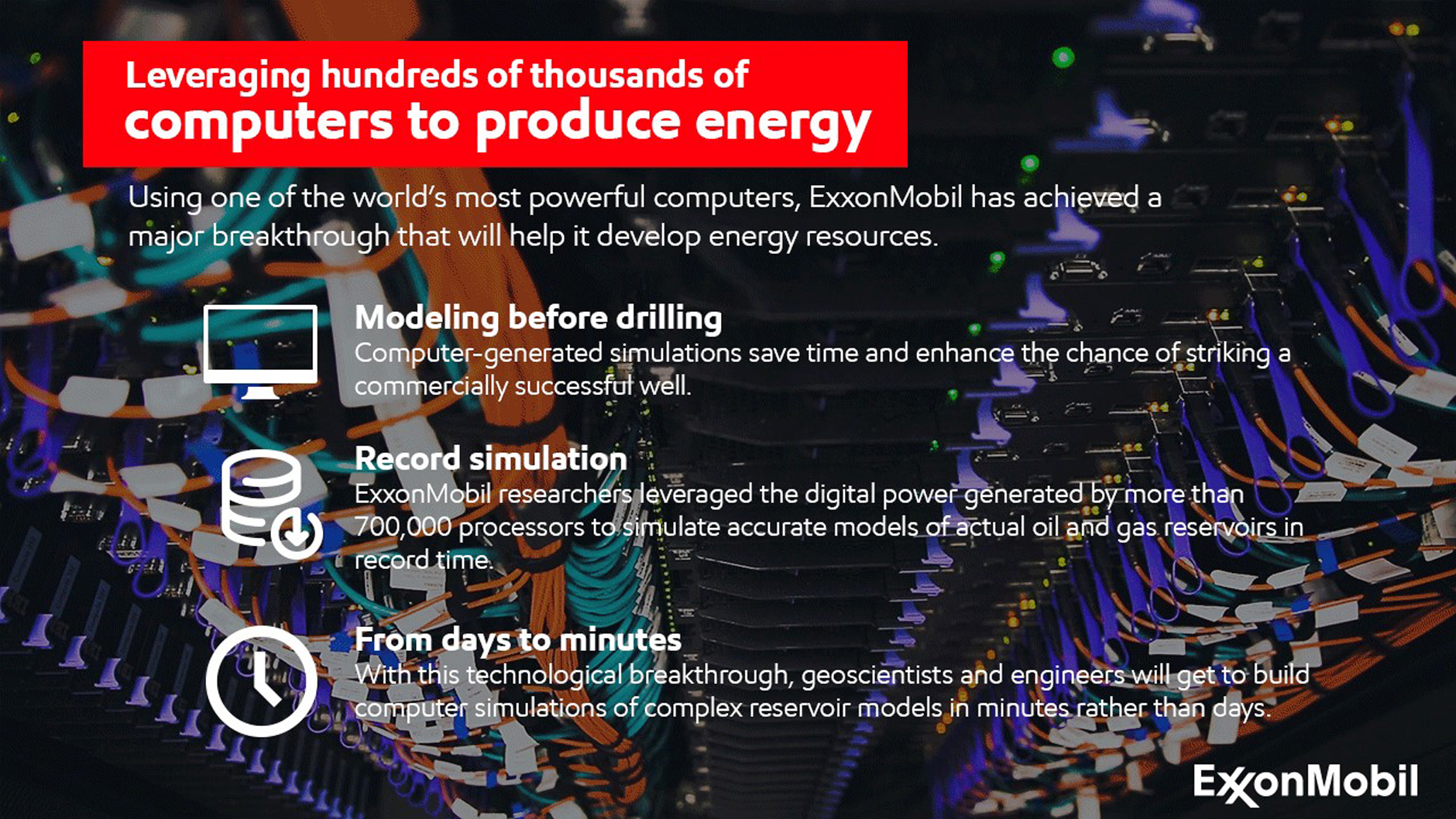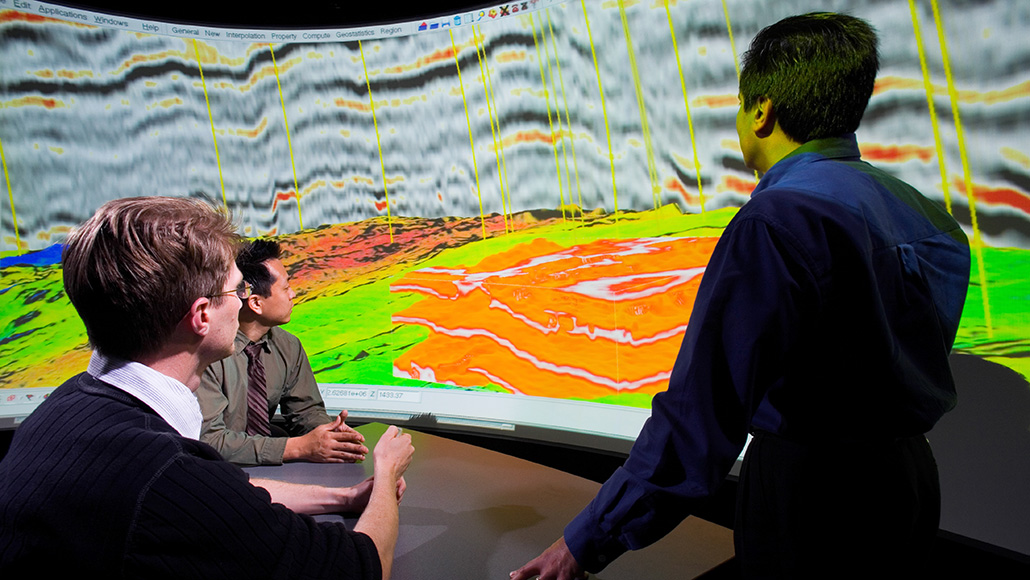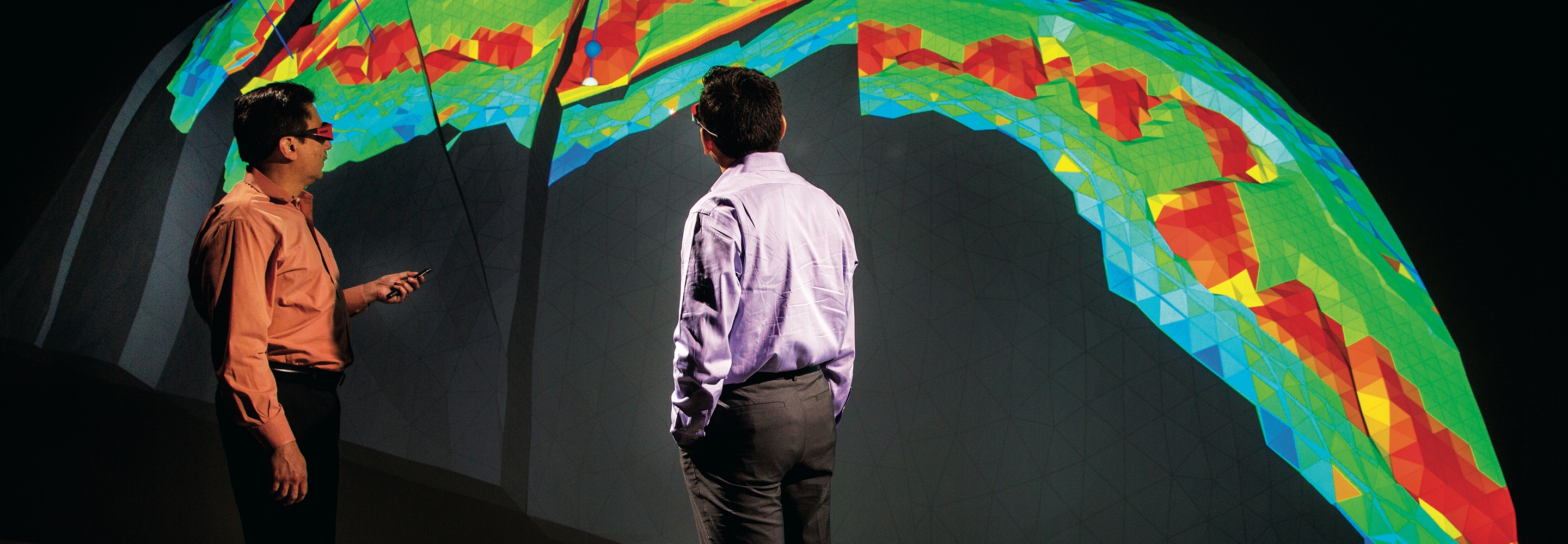selected item
ExxonMobil sets record in high-performance oil and gas reservoir computing
Executing technical computations on an unprecedented scale:
- Delivers breakthroughs in modeling capabilities to identify and produce resources, invest and deploy capital, improve efficiency and make better operations decisions
- Utilizes peta-scale computing to analyze models and perform simulations to address the most complex energy challenges
- Provides the ability to assess opportunities and scenarios computationally, reducing time, cost, risk and environmental impact
- Applies complex technology to challenges facing the recovery of oil and gas through the integration of world-class modeling, engineering, geoscience and computational sciences
In February 2017, ExxonMobil achieved a major breakthrough with proprietary software using more than four times the previous number of processors used on complex oil and gas reservoir simulation models to improve exploration and production results.
Working with the National Center for Supercomputing Applications (NCSA), ExxonMobil announced a breakthrough in parallel simulation using 716,800 processors, the equivalent of harnessing the power of 22,400 computers with 32 processors per computer. ExxonMobil geoscientists and engineers can now make better investment decisions by more efficiently predicting reservoir performance under geological uncertainty to assess a higher volume of alternative development plans in less time.
ExxonMobil announced a breakthrough in parallel simulation using 716,800 processors, the equivalent of harnessing the power of 22,400 computers with 32 processors per computer.
The record run resulted in data output thousands of times faster than typical oil and gas industry reservoir simulation. It was the largest number of processor counts reported by the oil and gas industry and one of the largest simulations reported by industry in engineering disciplines, such as aerospace and manufacturing.
The major breakthrough in parallel simulation will result in dramatic reductions in the amount of time needed to study oil and gas reservoirs. Reservoir-simulation studies are used to guide decisions such as well placement, the design of facilities and development of operational strategies to minimize financial and environmental risks. To model complex processes accurately for the flow of oil, water, and natural gas in the reservoir, simulation software must solve a number of complex equations. Current reservoir-management practices in the oil and gas industry are often hampered by the slow speed of reservoir simulation.
ExxonMobil’s scientists worked closely with the NCSA to benchmark a series of multi-million to billion cell models on NCSA’s Blue Waters Super Computer. This new reservoir simulation capability efficiently uses hundreds of thousands of processors simultaneously and will have dramatic impact on reservoir management workflows.

Related content

